Why Machine Variable & Speed matter in Sewing
Machine variable and machine speed might sound technical, but they are actually simple and very important in sewing and
fashion. Machine variable means the settings you can change on a sewing machine - like stitch type, stitch length, thread tension or needle size. Machine speed is how fast the machine sews, usually counted in stitches per minute.
These two things help decide how neat, strong, and quick your stitching is. If the settings or speed are wrong, the fabric might bunch up, break or not look right. But when you get them right, you save time, reduce mistakes and get better results. In
fashion design and garment making, knowing how to control machine variables and speed helps with quality, efficiency and smooth production. It's not just about using the machine - it's about using it the smart way.
Why These Concepts Matter in Fashion
Machine variable and speed may sound technical, but they play a big part in fashion. They help control how stitches look, how the fabric moves, and how smoothly the work flows. If the machine runs too fast on soft fabric, it can pull or stretch it. If it's too slow on thick fabric, it can waste time. That's where variable-speed machines help. You can adjust the speed based on the fabric and the design. This makes the stitches neat and the work easier to handle.
For beginners, variable speed is a big help. It gives better control and makes it easier to learn. With a manual machine, it's harder to get the speed right. But with variable speed, you can go slow when needed and build up confidence step by step. In fashion production, these settings save time and reduce mistakes. They help workers finish clothes faster and with better quality. So, knowing how to use machine variable and speed is a useful skill in both learning and real work.
Types of Speed-Controlled Sewing Machines
Not all
sewing machines run the same way. Some give you full control over the speed, while others do most of the work for you. Let us take a look at the main types.
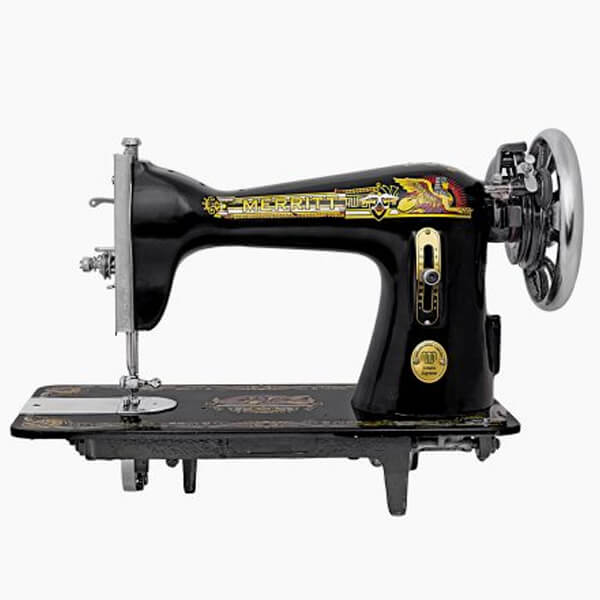
Mechanical Machines
(Basic and Manual)
These are simple machines with no screens or electronics. You turn a dial or use a wheel to control the speed. Good for beginners who want to learn slowly. They are easy to use and don't cost much. But they don't give smooth speed changes. You need to stop the machine and adjust by hand, which takes time.
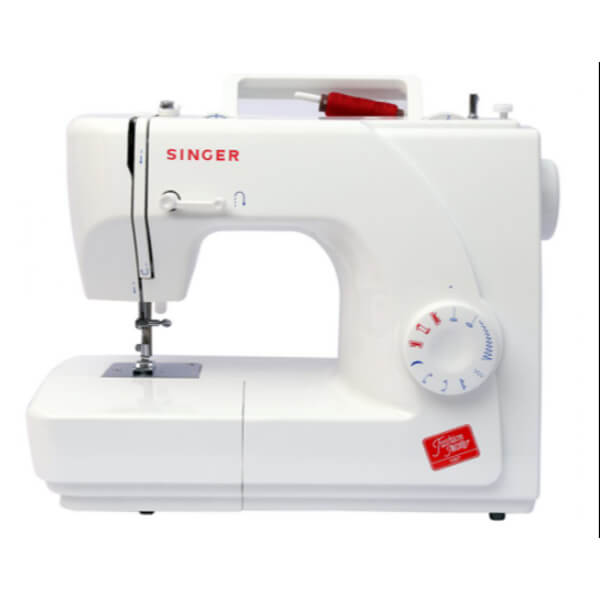
Electronic Machines
(Easy and Adjustable)
These machines have knobs or buttons and sometimes a small screen. You can change the speed quickly and easily. They also have a speed control slider, so even if you press hard on the foot pedal, the machine won't go too fast. A good choice if you want more control without going too technical.
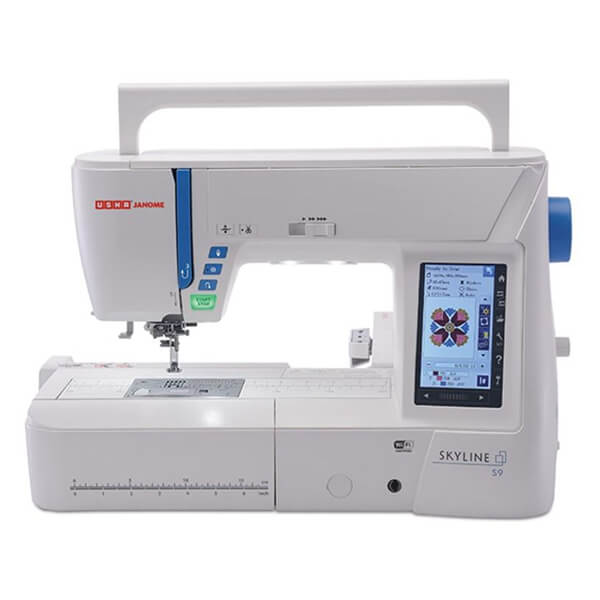
Computerised Machines
(Smart and Fast)
These machines use a motor and built-in programs. You can set the speed on a screen. Some even work without a foot pedal. They are great for embroidery or complex designs where steady speed is important. These machines are fast, accurate, and full of features - but they can be expensive and need more practice to use.
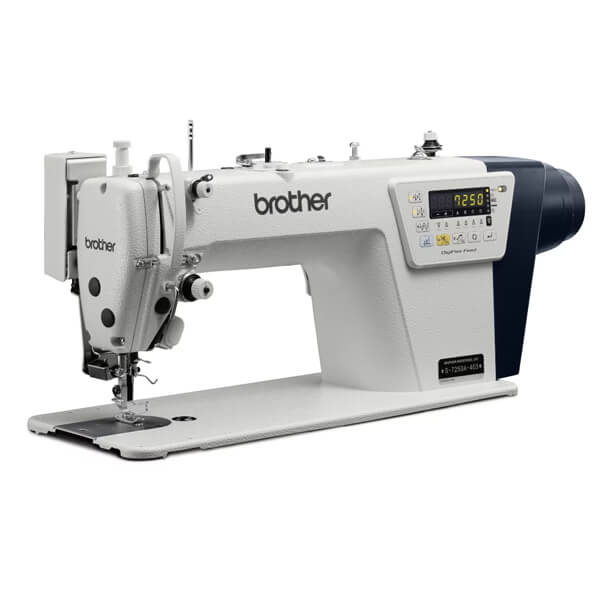
Industrial Machines
(Powerful and Steady)
These are made for factories or professional work. They run for long hours and stay fast and steady. Many have VFD (Variable Frequency Drive), which lets you control speed very smoothly, even at high levels. They are best for heavy fabrics or bulk stitching, but they are not meant for home use.
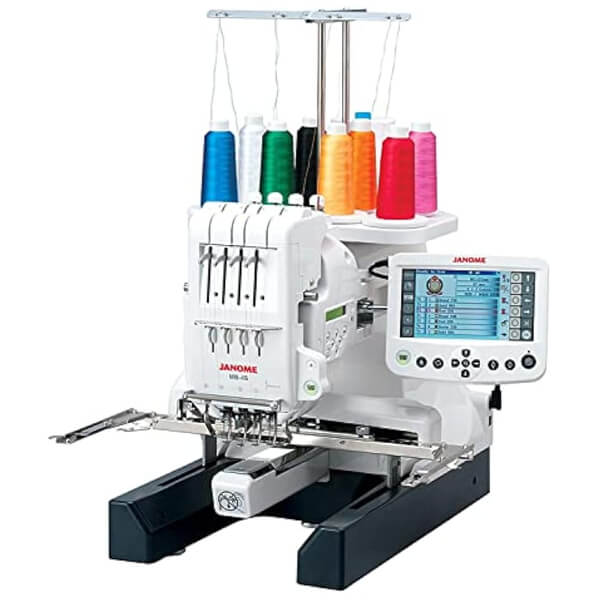
Commercial Embroidery Machine
Embroidery machines are advanced tools designed to create patterns on fabric. They come with built-in designs, memory storage, and USB ports for importing new patterns. High-end models feature LCD screens that let users preview, edit, and combine designs, as well as change thread
colours before stitching. These machines are quite expensive.
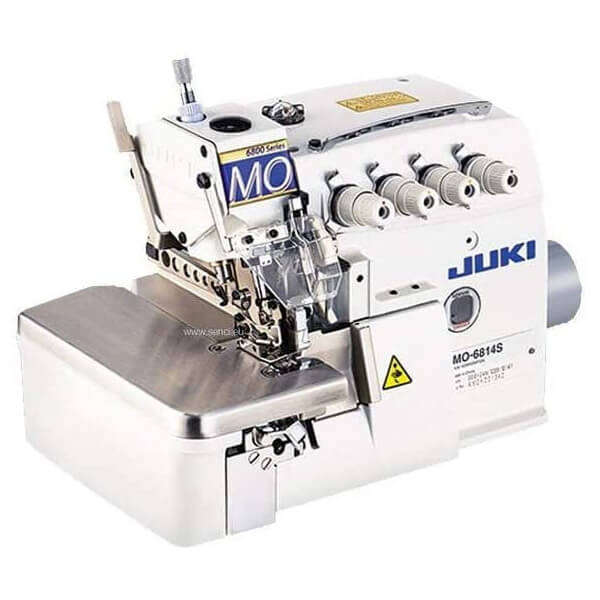
Over Lock Sewing Machine or Serger
The serger comes with three to five threads. It has the ability to sew, trim and over-sew the edges of seams, The serger can be used for neatening the edges and it creates a really professional look (eg: trouser panels serging, side seam stitch of a t-
shirt). An overlock machine can form various type of stitches like, stitch class 503, stitch class 504 and stitch class 512.
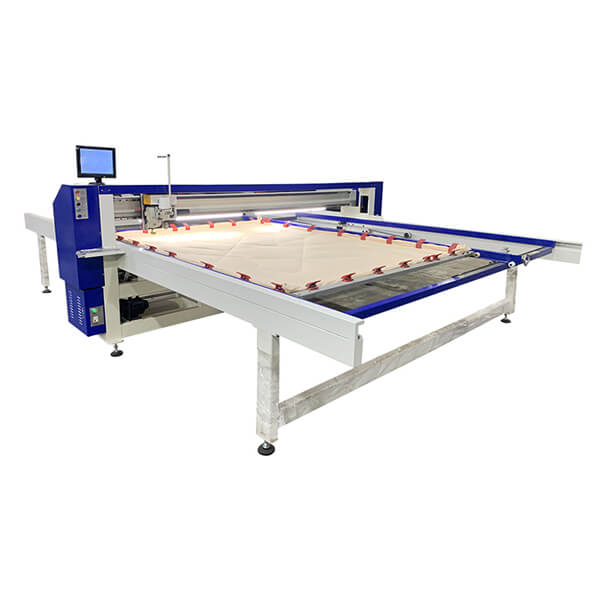
Quilting Machine
If you are planning to make large quilts, a Quilting Machine is highly recommended. This machine has a longer arm (working space) which holds the fabric steady in its place while sewing and allows greater volume of fabric to pass through the machine. The Quilting machine has the capability to sew thicker and multiple quantities of fabric.
Smart Technology behind Variable Speed
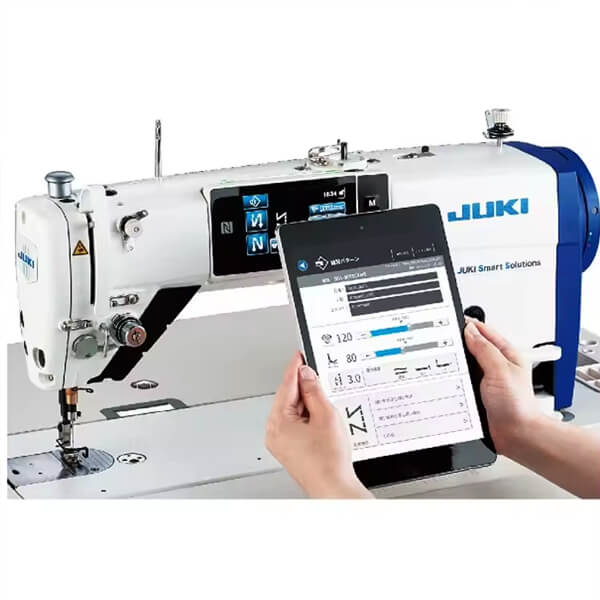
Machines today are getting smarter, and one key reason is something called a Variable Frequency Drive or VFD. This small device helps machines change their speed based on the work they need to do.
What does a VFD do?
A VFD controls how fast a motor runs. It does this by changing the frequency and voltage going into the motor. So instead of always running at full speed, the motor can go faster or slower, depending on the need.
Why is this Useful?
- Smooth Operation - Machines start and stop gently, which means less shaking and noise.
- Less stress on parts - Slow starts and stops help protect the motor and reduce wear and tear.
- Saves Energy - When a machine doesn't need full power, the VFD reduces the speed, saving electricity.
Real Benefits of Variable Speed
Using variable speed means machines last longer, work better and cost less to run. Whether it's a
sewing machine or a big motor in a factory, this simple technology makes a big difference. In short, VFDs help machines work smarter, not harder.
Feature Comparison Table
Different sewing machines work at different speeds. Some are easy to control. Others are made for heavy fabrics or faster work. Here's a quick comparison of four common types: Mechanical, Electronic, Computerised and Industrial machines.
| Feature | Mechanical | Electronic | Computerised | Industrial |
|---|
| Speed Control | Manual Pedal | Control Dial | Touch Buttons | Pedal with Clutch |
| Speed Range | 400 - 800 stitches / min | 600 - 900 stitches / min | 700 - 1100 stitches / min | 1000 - 5000 stitches / min |
| Ease of Use | Basic controls | Simple to use | Easy with presets | Needs training |
| Fabric Support | Light to medium fabrics | Works with most fabrics | Works with many types | Best for thick fabrics |
| Price Range (Rs.) | 5,000 - 12,000 | 10,000 - 20,000 | 20,000 - 45,000 | 30,000 and above |
Which Machine to Choose?
Mechanical machines are good for beginners and simple work.
- Electronic ones offer better speed control and work with more fabrics.
- Computerised machines are smart and easy to handle with more features.
- Industrial machines are very fast and strong but need some skill to use.
- Pick the one that matches your work and comfort level.
Impact on Fabric & Technique
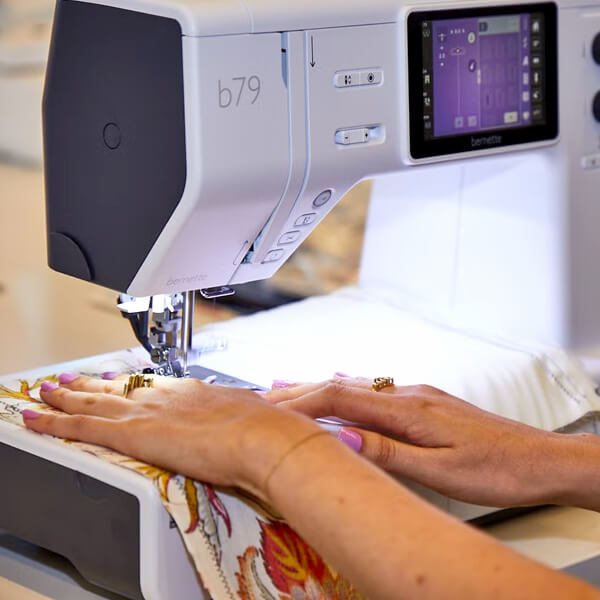
- Speed Matters with Every Stitch - The speed of your sewing machine plays a big role in how your fabric turns out. Go too fast, and the stitches can become uneven. Go too slow, and the fabric may bunch or not move smoothly. Delicate fabrics like silk or chiffon need a slow and steady pace. It helps keep the fabric flat and avoids pulling or puckering. On the other hand, thick fabrics like denim or canvas may need a bit more speed, but not too much. Too fast, and the needle may skip or even break.
- Clean Seams Come with Control - When you slow down, you get better control over your stitches. This is helpful when sewing curves, corners or detailed lines. Fast stitching is fine for long, straight seams on stable fabrics like cotton, but not for tricky areas or light fabrics. If the fabric is slipping or moving too much, lower the speed. If the machine is struggling to push the fabric, slightly increase it.
- Simple Speed Tips for Beginners - If you're new to sewing, start slow. You will avoid mistakes and learn better control. Once you're comfortable, you can go faster on simple parts. Here is a quick guide:
- Go Slow: For thin or delicate fabrics, corners, curves, and detailed work.
- Medium Speed: For normal cotton, light blends, and basic sewing.
- Go Fast (with care): For straight seams on strong fabrics, only when you feel confident.
Let the Fabric Decide
Every fabric behaves differently. Some need care, some can handle speed. Always test on a scrap piece first. Change the speed depending on how the fabric feels while stitching.
Efficiency & Production
- Why Machine Speed affects Production - If a machine runs too fast, it can make mistakes. If it runs too slow, work takes longer. That's why finding the right speed is important. In factories, the goal is to keep a balance - fast enough to finish more work, but slow enough to keep the quality good and the operator safe. When machines work at the right speed, production becomes smoother and better.
- Benefits of Variable Speed Machines - Machines with variable speed let you control how fast or slow they start and stop. This helps avoid sudden movements that can damage parts or waste material. A smooth start means less pressure on the motor and parts. A gentle stop means less noise and wear. This keeps the machine working well for longer and reduces repair costs.
- Fast doesn't always mean Efficient - Running a machine at full speed all the time is not always helpful. It may lead to poor quality, more repairs and tired workers. Efficiency means doing more with fewer problems. A steady and controlled speed often gives better results. So, instead of just thinking about speed, it's better to focus on how well the machine works in the full process.
Choosing the Right Sewing Machine

Picking the right sewing machine depends on what you need it for. If you are a student or hobbyist, start with something simple. Think about your budget, the type of fabric you will use, and the kind of work you plan to do. Light cotton or
silk needs a gentle machine. Thick fabric like denim needs a stronger one. Make sure the machine has basic stitch options and speed control. You don't need anything fancy - just something reliable and easy to use.
For factories or production units, the needs are different. These places use heavy-duty machines that run for long hours. VFD-equipped machines are a smart choice here. VFD (Variable Frequency Drive) helps control speed without changing the machine's motor. This is useful when working with different types of fabric.
Regular care is also important. Machines should be cleaned and oiled often to keep them running smoothly. Also, workers must be trained to handle the machines safely and correctly. This helps avoid mistakes and saves fabric. So, whether you are learning at home or running a
business, choose a machine that suits your fabric, speed and work style.
Maintenance & Safety Made Simple
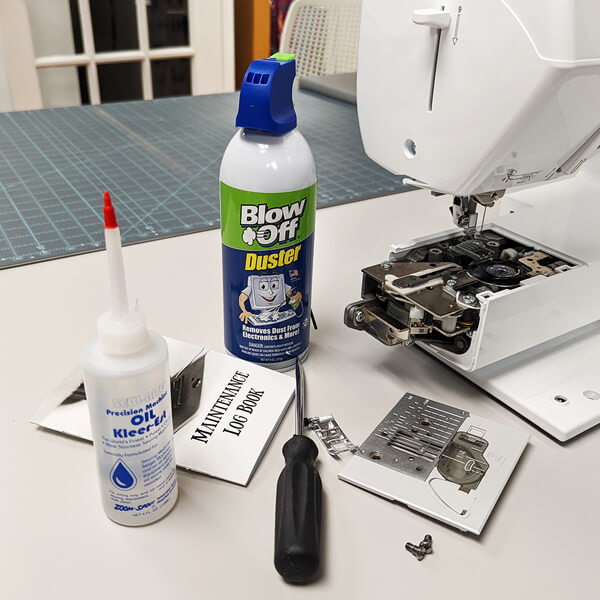
Looking after your sewing machine is just as important as using it. A well-kept machine runs better, lasts longer and helps you stay safe. Start with oiling. Use the right oil and add a few drops where the manual says. This keeps the parts moving smoothly and stops strange noises. Check the belt often. If it's too loose or too tight, it can affect the speed and damage the motor. It should feel firm but not stiff. Keep an eye on thread tension. If your stitches are messy or the thread breaks, the tension might need adjusting. Make it a habit to check before you start sewing.
For beginners, slow is best. Don't rush. Sewing at a lower speed gives you more control and helps you stitch neatly. It also reduces the chance of mistakes. Always follow the safe speed limits. If your machine has settings, start slow and increase only when you are confident. Clean the machine regularly. Dust and thread bits can build up and cause problems. A soft brush or cloth works well. In short, small
checks make a big difference. Take care of your machine and it will take care of your sewing.
Future Trends: Smarter Machines, Better Control
Machines are getting smarter. Some now use AI to control speed on their own. They can sense the load and adjust the speed without any help. This helps save time and reduce mistakes. You can also connect some machines to your smartphone. That means you can check or change settings from anywhere. It makes the work easier and quicker. Another big change is the use of VFDs (Variable Frequency Drives). These help machines use only the power they need. So, they don't waste energy. This saves electricity and is better for the
environment. In short, the future is all about smart control, less energy use, and better results.
Understanding machine variables and speed isn't just about settings - it's about control. When you know how to adjust them, you can work smarter, neater, and faster. You decide how your machine moves, not the other way around. Speed control gives you freedom. Slow down when you need care. Speed up when you're confident. It's all in your hands. So don't be afraid to try new things. Test different speeds. See what works best for your style. That's how real learning happens. Keep practising. Keep exploring. With the right control, you'll not just sew - you'll create with skill and confidence.
Frequently Asked Questions about Sewing Machine Speeds
1. What is machine speed in sewing?
Machine speed means how fast a sewing machine can stitch. It's measured in stitches per minute (SPM). The higher the number, the faster the machine.
2. What does variable speed mean?
Variable speed means you can control how fast or slow the machine stitches. You can change the speed using a dial, button or foot pedal.
3. Why is speed control important in sewing?
Speed control helps you sew neatly, especially on tricky fabrics. It gives you better control and reduces mistakes.
4. What is SPM in sewing?
SPM stands for Stitches Per Minute. It tells you how many stitches the machine can make in one minute.
5. How does speed affect your sewing?
If the machine is too fast, stitches can go wrong or the fabric may shift. Slower speed gives more control, especially for details.
6. What is a VFD in sewing machines?
VFD means Variable Frequency Drive. It helps control the motor speed in big sewing machines. It makes the machine run smoother and saves energy.
7. Which machines have speed control?
Most electronic and computerised machines have speed control. Some better mechanical ones also offer basic speed settings.
8. Is speed control helpful for beginners?
Yes. It is great for beginners because you can start slow and learn step by step without rushing.
9. What speed is good for home use?
A machine with 600 to 1000 SPM is good for home. It is fast enough for most projects and easy to manage.
10. Can industrial machines run at different speeds?
Yes. Many modern industrial machines have motors that let you adjust the speed easily.
11. How does speed vary in different machines?
- Mechanical: Speed changes with foot pedal.
- Electronic: Speed can be set with a dial.
- Computerised: Uses buttons or screen settings.
- Industrial: Uses smart motors or VFD for full control.
12. Do variable-speed machines save power?
Yes. They only use the power they need, so they save energy and make the machine last longer.
13. What are the benefits of using a variable-speed motor?
- More control
- Saves energy
- Less noise
- Less damage to parts
- Smoother stitching
14. How do I pick the right speed for a project?
- Slow: For small details or soft fabrics.
- Medium: For regular sewing.
- Fast: For straight seams or long runs.
15. Can I upgrade my old machine to variable speed?
Some industrial machines can be upgraded, but most home machines cannot.
16. How fast can industrial machines go?
They can stitch between 3,000 and 5,500 stitches per minute, depending on the model.
17. Do embroidery machines have speed settings?
Yes. You can set the speed for neat and clean designs.
18. Is fast sewing always better?
No. Very fast stitching can cause skipped stitches or fabric
issues, especially with soft or stretchy fabrics.
19. What fabrics need slow sewing?
Silk, Satin, Lace, Organza. These are delicate and need extra care.
20. What speed is good for thick fabrics like denim?
Use slow or medium speed, with the right needle. Fast stitching can break needles or miss stitches.
21. How often should I service a fast machine?
For heavy use, service it every 3 to 6 months. For home use, once a year is fine.
22. Do all computerised machines have speed control?
Almost all do. They let you choose how fast you want to sew using buttons or a screen.
23. Can speed affect thread tension?
Yes. Sewing too fast can change the thread tension and cause messy stitches.
24. Is high-speed sewing safe?
It can be, if you follow safety tips:
- Keep your fingers clear.
- Wear glasses.
- Don't wear loose clothes.
- Start slow.
- Turn off the machine when not in use.

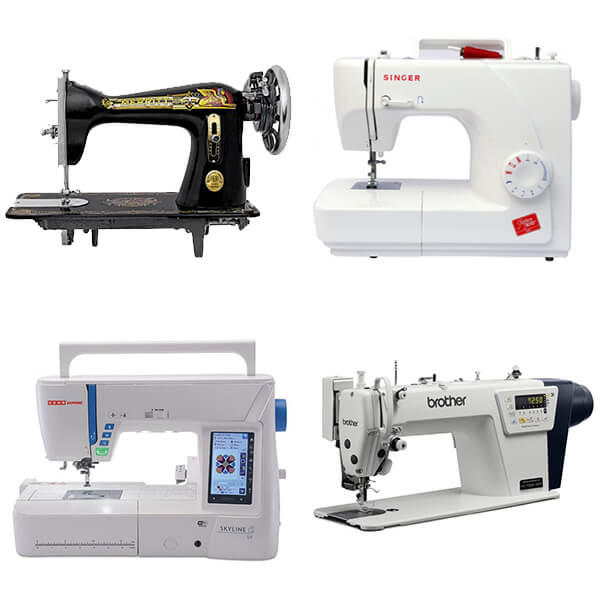
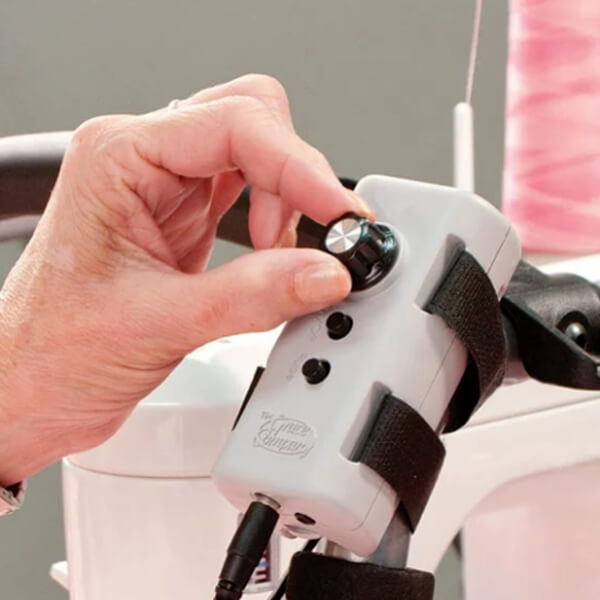











 CONTACT USWaves Institute of Fashion Designing,
CONTACT USWaves Institute of Fashion Designing,